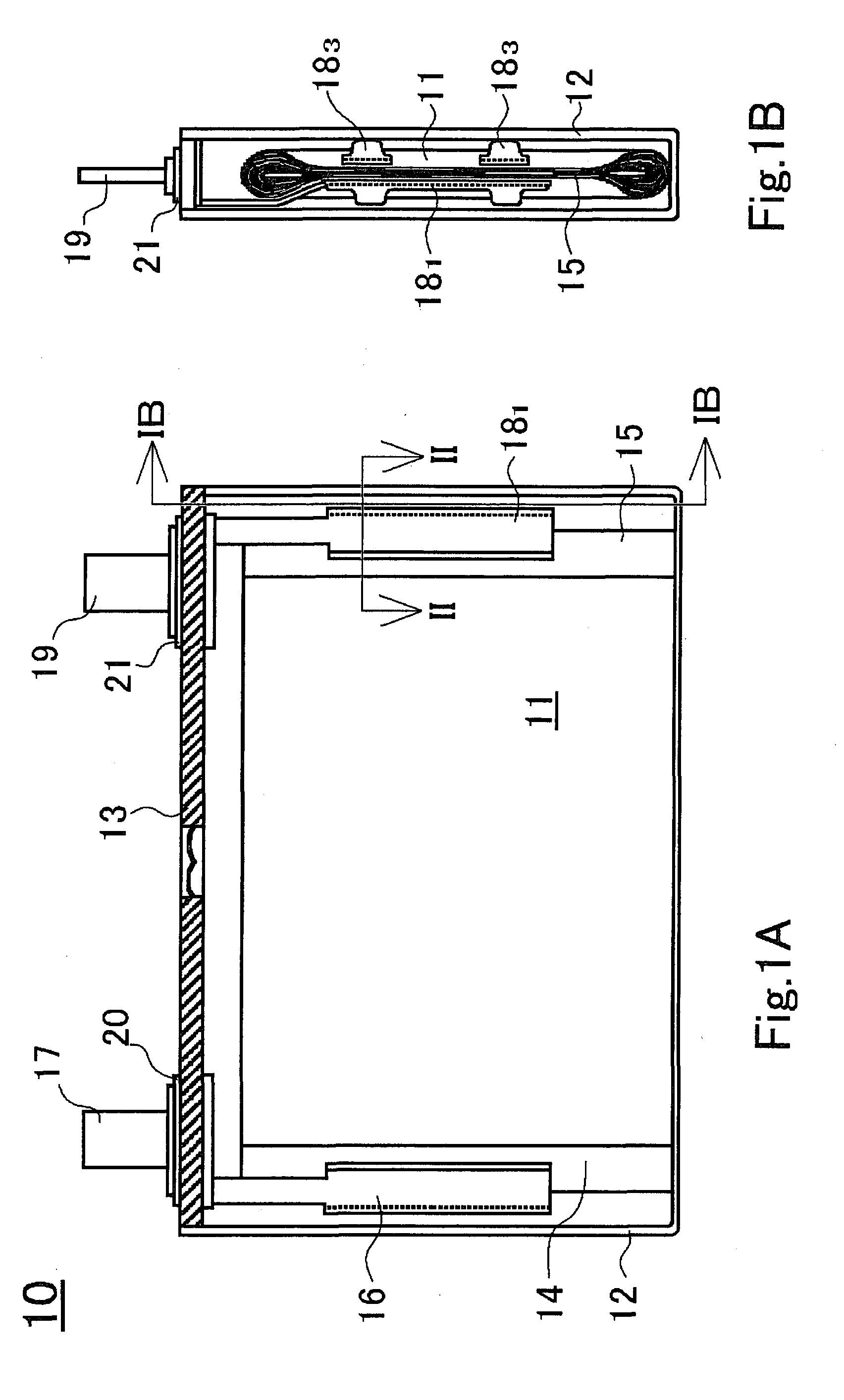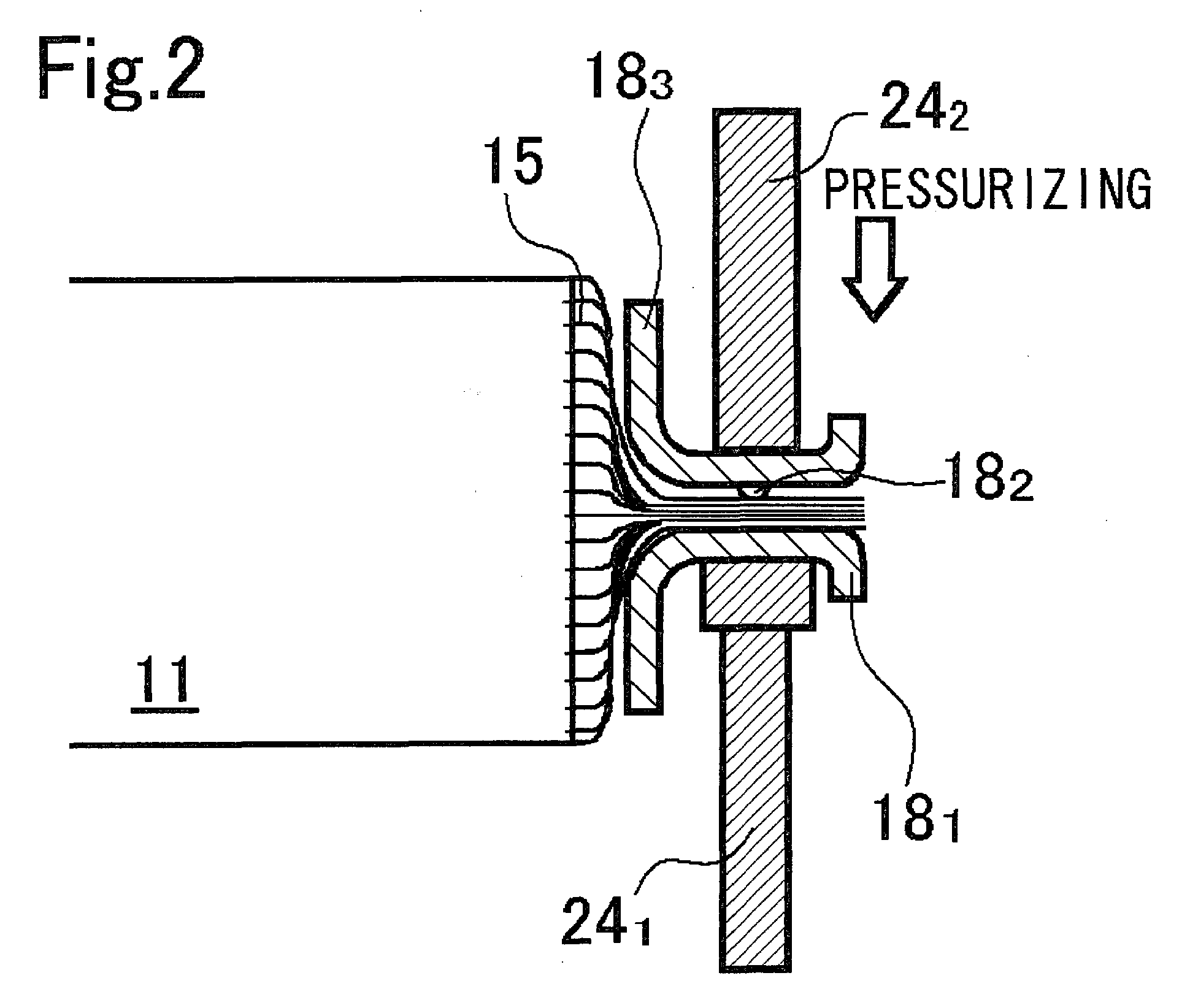Sealed battery
a battery and seal technology, applied in the field of sealable batteries, can solve the problems of large increase in heat, large amount of energy required in welding, and variable weldability, and achieve the effect of low occurrence of internal short circuits
- Summary
- Abstract
- Description
- Claims
- Application Information
AI Technical Summary
Benefits of technology
Problems solved by technology
Method used
Image
Examples
first working example
[0049]In the first working example, as shown in FIG. 2, a copper-made negative electrode collector receiving part 183 in which a tapered protuberance 182 (having a height of 0.8 mm and a diameter of the bottom part of 2 mm) functioning as a projection is formed in the central part thereof, was used. Then, as shown in FIG. 3, a copper-made negative electrode collector 181 in which a flat-surfaced protuberance 184 in a columnar shape having a diameter of 4 mm and a height of 0.5 mm is formed in the central part thereof was used. Surrounding the flat-surfaced protuberance 184 and departing from the protuberance 184 by 1 mm, an insulating tape layer 22 having a thickness of about 0.5 mm produced by laminating insulating tapes (a polypropylene tape in which the substrate is made-of polypropylene tape and an adhesive is rubber-based) having a thickness of 40 μm was adhered. That is, a groove 23 formed in the negative electrode collector 181 of the first working example has a groove diamet...
second working example
[0051]In the second working example, the same negative electrode collector receiving part 183 as that used in the first working example was used. Then, a copper-made negative electrode collector 181 in which a flat-surfaced protuberance 184 in a columnar shape having a diameter of 20 mm and a height of 2 mm is formed in the central part thereof was used. Like in the first working example, surrounding the flat-surfaced protuberance 184 and departing from the protuberance 184 by 9 mm, an insulating tape layer having a thickness of about 2 mm produced by laminating the same insulating tapes as those in the first working example was adhered. That is, a groove 23 formed on the negative electrode collector 181 of the second working example has a groove diameter of 20 mm, a groove width of 9 mm and a groove depth of 2 mm.
[0052]In the above-described state, by performing the resistance-welding as described above, it was inspected visually whether the spattered particles splash to the outsid...
PUM
| Property | Measurement | Unit |
|---|---|---|
| inner diameter | aaaaa | aaaaa |
| depth | aaaaa | aaaaa |
| width | aaaaa | aaaaa |
Abstract
Description
Claims
Application Information
 Login to View More
Login to View More - R&D
- Intellectual Property
- Life Sciences
- Materials
- Tech Scout
- Unparalleled Data Quality
- Higher Quality Content
- 60% Fewer Hallucinations
Browse by: Latest US Patents, China's latest patents, Technical Efficacy Thesaurus, Application Domain, Technology Topic, Popular Technical Reports.
© 2025 PatSnap. All rights reserved.Legal|Privacy policy|Modern Slavery Act Transparency Statement|Sitemap|About US| Contact US: help@patsnap.com



